61 Different Types of Spoons & Their Uses
Author: Rick Worst | Editor: Omar Alonso
Review & Research: Jen Worst & Chris Miller
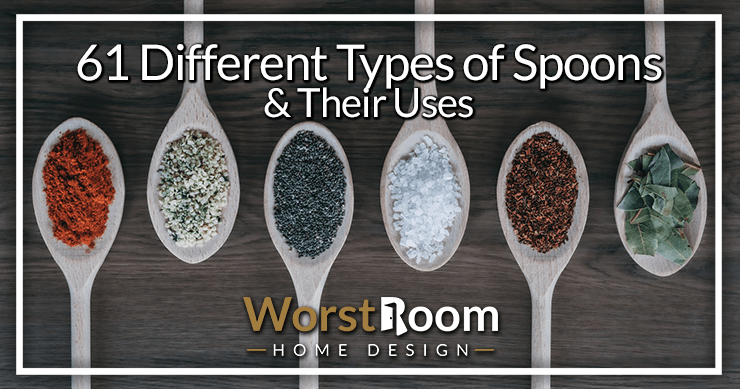
Over time, humans have perfected very few things. One of those rare occurrences are the various spoon types for every possible use. It's easy to understand why since cooking and eating have been key components to our survival.
Minimizing the time cooking takes while maximizing the convenience of cooking and eating relies largely on the different types of spoons and their uses.
We love spoons so much that we've even turned them into traveling souvenirs, have museums with large collections, and have even used them as status symbols of wealth and power in the past.
Spoon Types & Their Uses
Spoons come in various sizes, shapes, designs, and are made from differing materials to make sure they perform their job as well as possible. Below we cover the most popular and historically significant styles.
Though it's impossible to show each tiny variation, we've covered the main categories and pointed out ones with unique features. If you know of more, please let us know! I'll break it down by purpose (alphabetical order within) and then a separate section for special features.
Eating Spoons
Spoons designed for eating are almost always named after the food they're meant to be used with. I laughed because I just read that these are usually used to "transfer food from a storage vessel (like a plate or bowl) to the eater's mouth, usually at a dining table."
I'm eating cereal at my desk, and otherwise on the couch, so that theory is out.
Absinthe Spoon
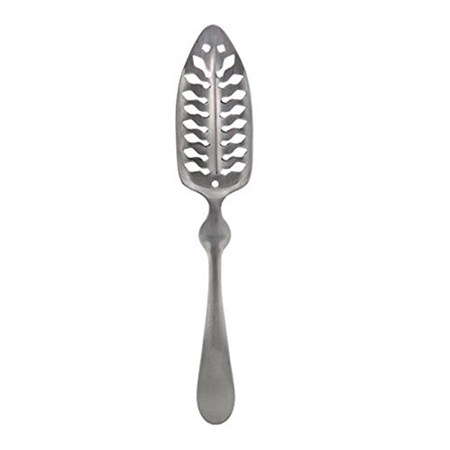
This is a very unique type of spoon created specifically for absinthe drinkers. They are either perforated with holes or slotted so when you stir your drink you create a lot of little currents in the liquid.
This is great for dissolving the sugar cube that is dunked in using the utensil. The bowl end is long and flat, enough to reach over the glass and rest on it, held stable by the notch built into the bottom of the handle.
Bouillon Spoon
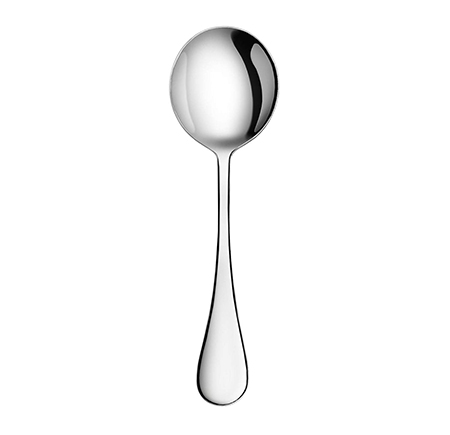
These feature a wide and round bowl (as opposed to an oval bowl) that is shallow, exposing more surface area of the clear, broth-based soup for quicker cooling. It's also used for jellied soups like the cold-served madrilene.
The design is so the spoon can curve into the rounded sides of a soup bowl so you aren't left tipping the bowl to drink it, which is considered to be not classy by many.
Caviar Spoon
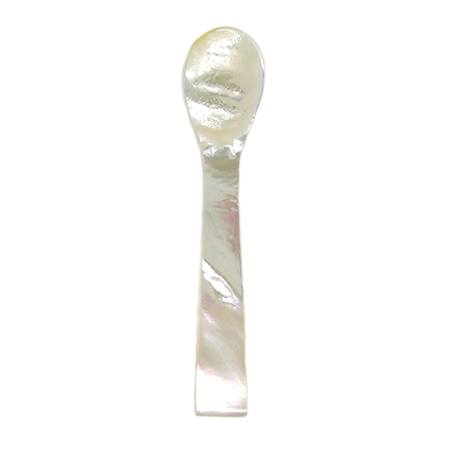
The core feature of these are the material they are made from. They're created most often with mother of pearl, animal horn, wood, or gold, because these do not affect the taste of the caviar unlike silver would.
These are often much smaller (3 to 5 inches in length) than standard spoons due to the size and shape of the containers within which caviar is stored. Their bowls are shallow and oval shaped in order to restrict giant scoops. You only need small amounts of caviar at a time.
Chinese Spoon
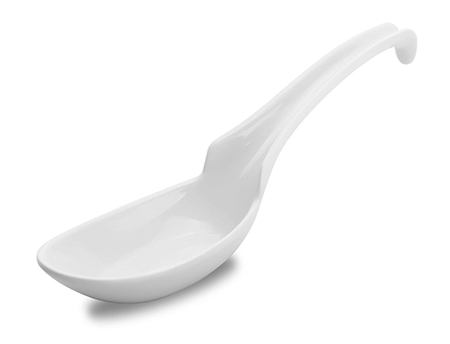
Often seen at various types of oriental restaurants, these feature a shorter and thicker handle leading to a deep bowl with a flat bottom.
Usually constructed from ceramic, they're used for liquids like soups and sauces, but are often used to scoop loose, solid food items, too. They're often called duck spoons.
Coffee Spoon
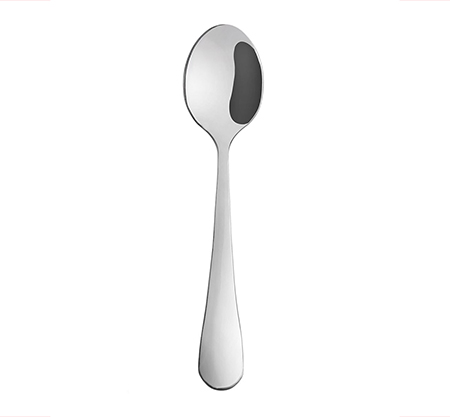
Not to be confused with a coffee measuring scoop, these are small (often more so than even a teaspoon) meant to be used for stirring and sipping coffee from a smaller after-dinner coffee cup. They aren't seen often anymore unless a part of a special set of dishes.
Cream Soup Spoon
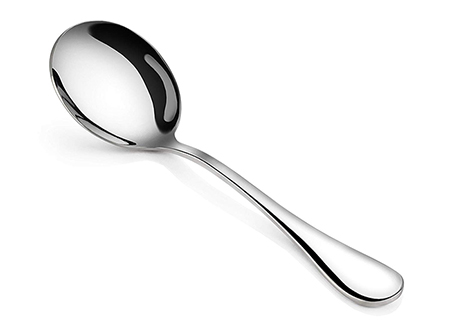
I'm not sure why these even exist. They're basically soup spoons but with shorter handles and meant for eating creamier soups. This is where we get into wealthy people in the past showing off their wealth and class and making dinner more complicated with etiquette rules.
Cutty
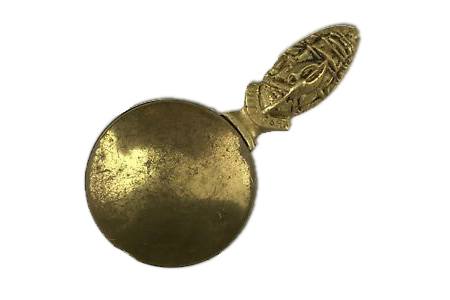
Cutty is a Scottish, Irish, and British term meaning "shortened and stubby." These are shorter in length, often so short that the handle is as long as the bowl itself.
We, as in humanity, isn't sure what the true origins or uses of these are. They're simply a historical curiosity that's worth mentioning.
Demitasse Spoon

These are even smaller than coffee spoons (which are smaller than teaspoons). They're also used for coffee drinks but particularly ones with a froth top like a cappuccino so it can be scooped and tasted alone.
You'll see them called "espresso spoons" sometimes as well, because their size is intended for use with cups the size of espresso cups.
At stores and restaurants they're usually plain polished silver or stainless steel (or even plastic), though home coffee brewers will often purchase one with an ornate handle.
Dessert Spoon
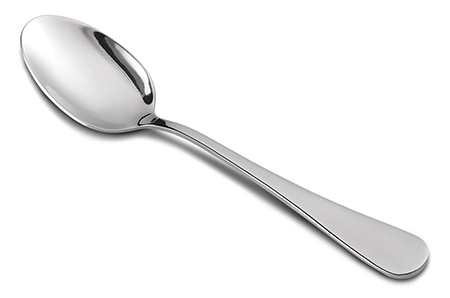
The core feature that sets these apart is that the bowl on them is slightly longer and more pointed than your typical oval bowl. People use them for anything, like cereal or soup, but they're meant to be used for desserts.
They're typically between the size of a teaspoon and a tablespoon. They were created for formal table settings, where the dessert spoon would be either brought to you with your dessert or placed above the plate.
Egg Spoon
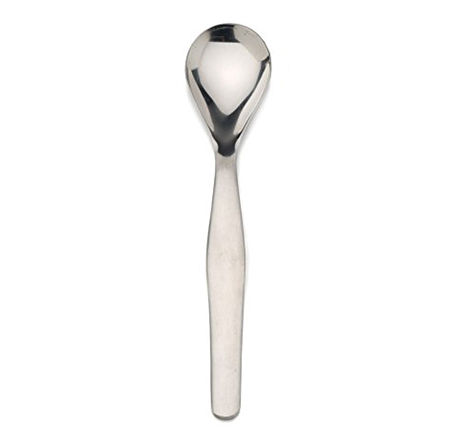
These are designed specifically for eating hard boiled eggs from an egg stand. They feature a shorter handle and a shorter bowl in order to more easily scoop inside the stand. The tip is more pointed but the bowl is more rounded than your typical teaspoon.
French Sauce Spoon

As its name implies, this was created by the French in 1950 in order to eat sauce. It's similar to a dessert spoon is shape and size, though the bowl is flatter and notched on the side with thinner edges. Sometimes it's called a saucier spoon.
It's design aids in the scooping of thin layers of sauce from a sauce plate, which keeps you from needing to tip the plate, which isn't classy. The notch is said to allow oils and fat to run off the sauce.
Grapefruit Spoon
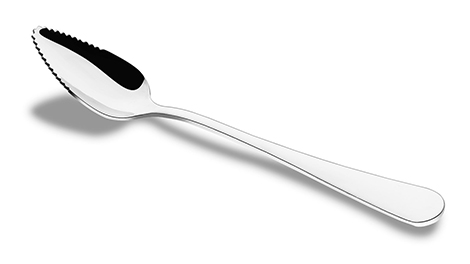
Also known as an orange spoon, citrus spoon, and fruit spoon, this almost looks like a teaspoon except for the tip of the bowl, which leads either to a sharp edge or has teeth cut into it.
This makes it easier to separate the flesh of a citrus fruit or melon from the rind. Some have a very long bowl that's about half-width, with a curved tip for scooping, though rarer.
Gumbo & Chowder Spoon
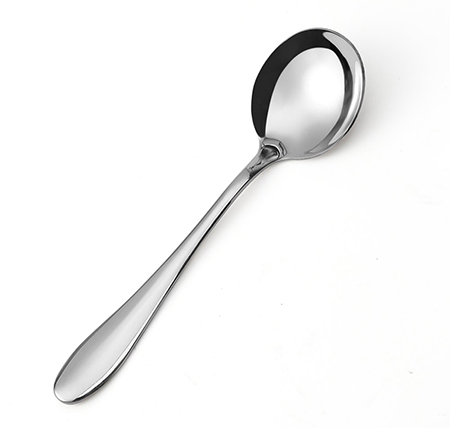
For thicker soups with meats and vegetables in them, a gumbo spoon is a great choice. They're traditionally around 7 inches in length with a much larger bowl than a teaspoon.
This bowl is shallow and perfectly round, again allowing for big scoops and more surface area to allow for cooling of the soup before taking it in your mouth.
Horn Spoon
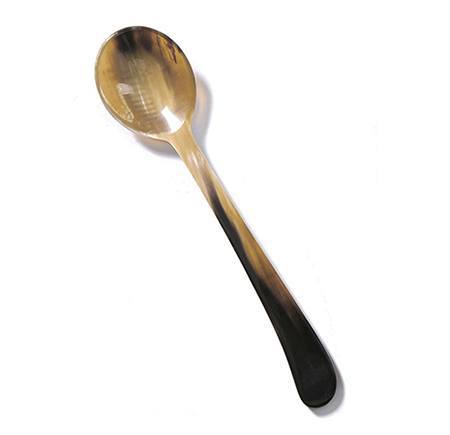
These are made from animal horns, largely with two traditional usages. The first is they are perfect for eating boiled eggs because they won't tarnish over time from being exposed to the sulfur in the yolk (like silver will tarnish).
The second is for caviar, though less prevalent than other materials, because it doesn't interfere with the delicate taste of roe.
Iced Tea Spoon
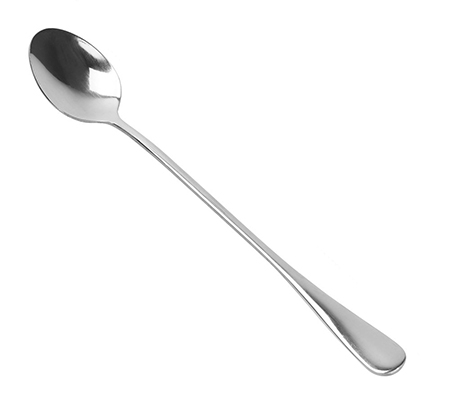
There's not much to say about these. They're basically tablespoons with much longer handles to reach the bottom of a pint glass of iced tea where sugar settles and to also make sure you're mixing lemon or other flavors in all the way through.
Korean Spoon
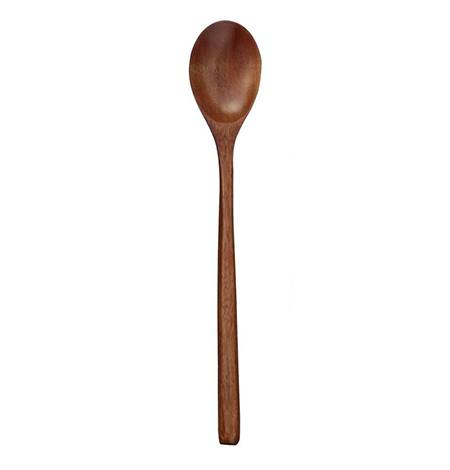
Sujeo is a portmanteau of the words sutgarak (meaning spoon) and jeotgarak (meaning chopsticks). The sutgarak has a long handle and a shallow, rounded bowl. The total length matches the length of chopsticks.
They're usually made from stainless steel. In the past they were a common wedding gift, often wrapped in fabric or paper embroidered with symbols of longevity.
Marrow Spoon
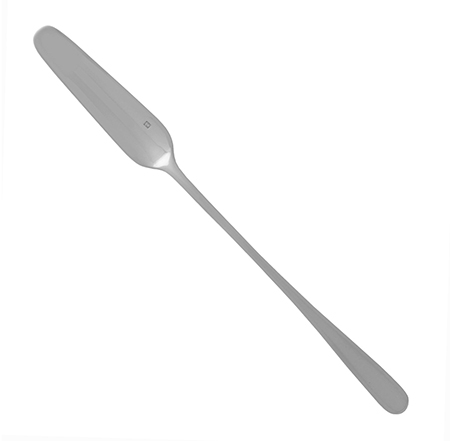
You don't see these much any more since we don't eat marrow right out of a bone often, but they're out there. They were common in the 18th century, usually made of silver and featuring a long and thin bowl to fit inside the bone.
Parfait Spoon
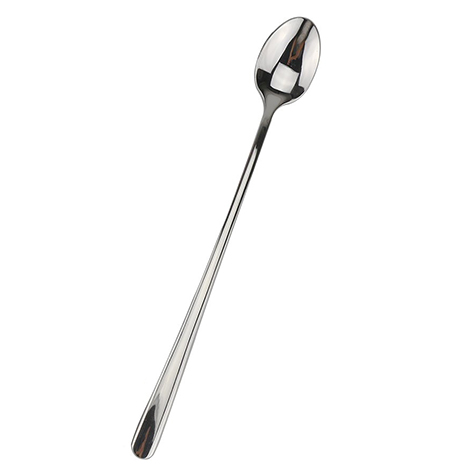
These are specifically designed to be used for eating parfait, sorbets, sundaes, and other similar desserts that are served in tall glasses. Due to this, they feature a very long, slim handle leading to a typical teaspoon shaped bowl. You can find them with various types of bowls, but this is the most common.
Plastic Spoon
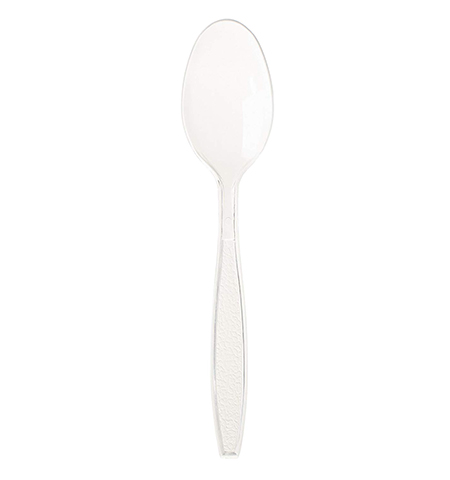
Explaining these is making me giggle. These are modern aged spoons of all sizes, though usually tablespoon sized, that are made of plastic.
They are inexpensive and available in bulk, meant to be used and disposed of after use. They're flexible, resist stains, and come in any color you want, including transparent. The best of them are biodegradable.
Rattail Spoon
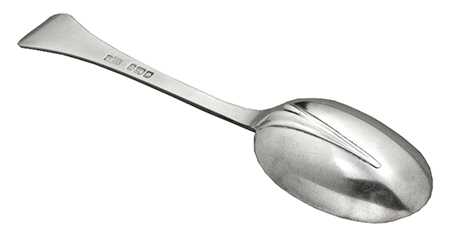
These were created in the late 17th century. They feature a reinforcement from the bottom of the bowl to the handle meant to reinforce the joint between the bowl and handle. The reinforcement is a thin tongue that comes to a point.
Salt Spoon
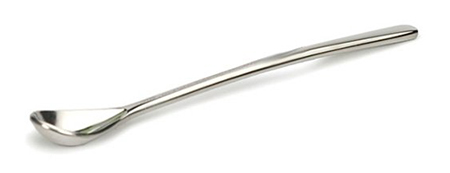
These are meant to be used with salt cellars, which are just small bowls that hold salt (sometimes called a salt pig). We've replaced them with salt shakers, obviously. But the salt spoon itself is a miniature spoon like the caviar ones.
Saucier Spoon

These typically have a flatter and shallower bowl with a flattened notch on the side meant to drizzle sauce over foods like fish. More modern versions feature a deeper bowl with a kind of pouring spout on the front to achieve the same goal.
Soup Spoon
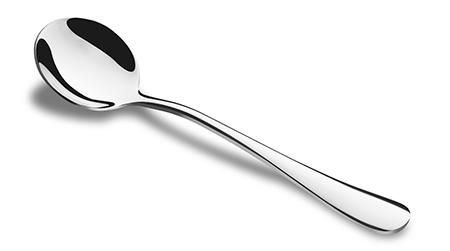
These are similar to a ladle but scaled down to a dinner spoon size with a horizontal handle. They're larger round bowls are meant for eating thin soups. You can find these in sets of flatware and silverware to this day, but don't mistake them for a standard teaspoon.
M1926 Spoon

These are army issue spoons in the United States, provided is mess kits for soldiers from 1941 to 2002. They have a volume that is equal to two tablespoons, which you can imagine is kind of big for eating.
Seal-top Spoon
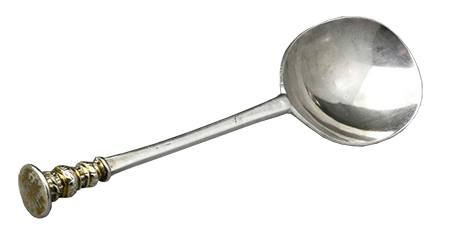
These were popular in England from the late 16th century through the 17th century. They're made of silver, and the end of the handle culminates in a circular seal, much like the Japanese hanko stamps.
They could be used to seal letters with wax, but simply became a common decorative method for utensils.
Spork / Sporf / Spife / Splayed
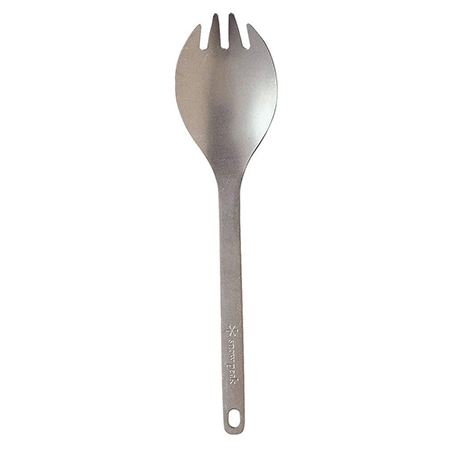
These goofy things are a combination of multiple eating utensils, like a spoon and a fork (spork), a spoon, fork, and knife (sporf), a spoon and a knife (spife), and again a spoon, fork, and knife (splayd).
People use these the most when hiking and camping, from my experience. There are other combinations like forkchops and a chork, all of which are also classified as types of forks.
Stroon / Straw Spoon
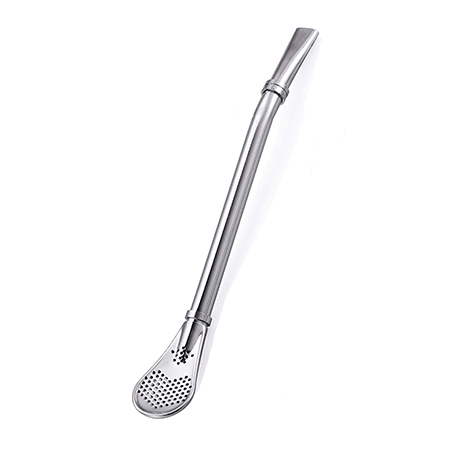
This is another combination that's far less silly. It's a straw with a bowl at the bottom used for scooping foods like a slushy or milkshake. Once you run out of firm solids and you're dealing with the melted liquid at the bottom, you can drink it through the straw handle.
Cooking & Serving Spoons
Some of these utensils are used exclusively when cooking while others are used for serving the prepared meals.
There's some gray area between serving and eating utensils, so the ones below are largely serving spoons exclusively. Any that can be both have already been mentioned above.
Bar Spoon
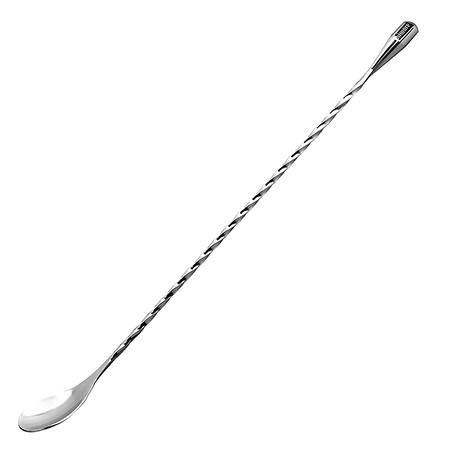
These are nearly the exact same as a teaspoon at the bowl, but the handles are extremely long. They're used in bartending when mixing or layering drinks. This lets the bowl reach the bottom of even their tallest tumblers and cups in order to ensure the bottom gets mixed up.
The bowl holds 5 milliliters of liquid (same as a teaspoon). The handle is usually a decorative swizzle stick for easy gripping when wet and making it possible to spin the bowl.
Berry Spoon
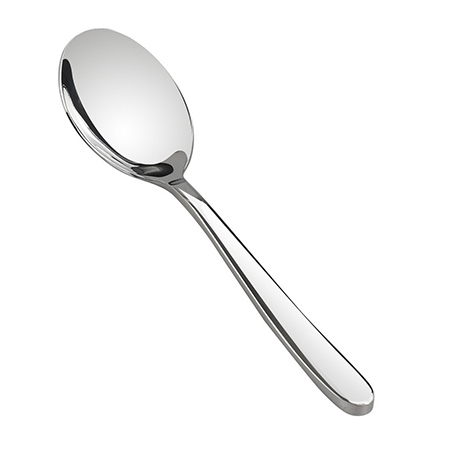
These feature large bowls, larger than you'd expect, that are broad and deep in order to serve berries and salads. This could be achieved with a different type of spoon but whatever. We're too far gone already. Spoons for everything! These are often slotted to drain juices too.
Bonbon Spoon
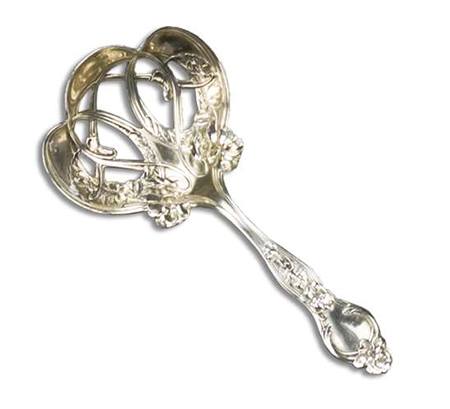
These have a large and flat bowl, perforated to drop off crumbs, in order to serve bonbons, nuts, and other dry, crumbling foods. You could almost consider these one of the types of spatulas, to some degree.
Caddy Spoon
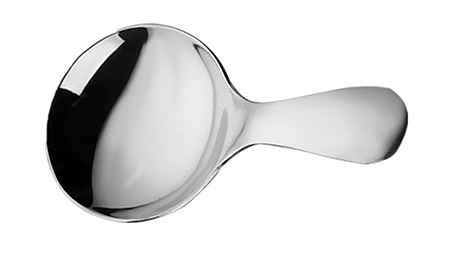
These are typically very ornate with an extremely wide and long bowl, though modern ones are far more minimal in design. They're made out of silver, used in the 19th century for rich people when tea was an expensive commodity.
They're designed to be used with a tea caddy to scoop out and measure the dry tea leaves.
Chutney Spoon
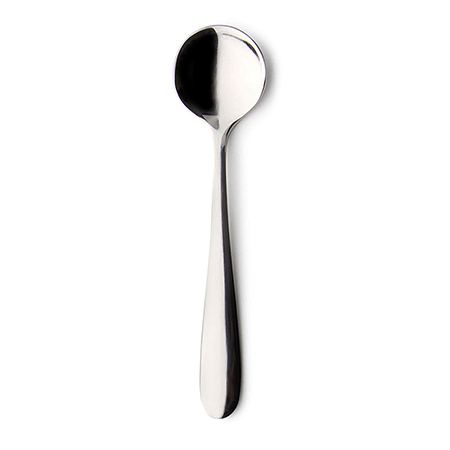
These are meant from scooping out chutneys from a communal dish so we aren't just digging our hands in the mango chutney. These days you only find them in matching sets with a spoon holder and lidded dish to hold the chutneys.
Jelly & Jam Spoon
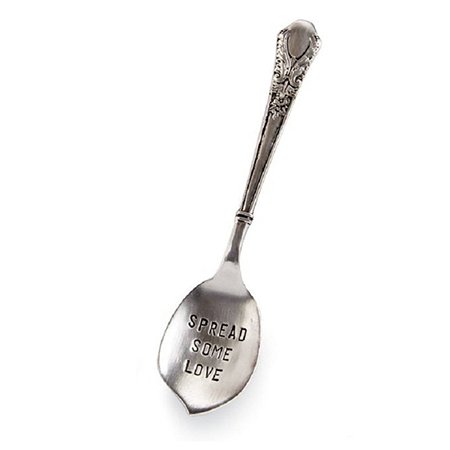
Designed a lot of times with a point and a shaped edge to facilitate the scooping of jelly or jam from a jelly jar. The cloud shaped edges (or other shapes) give the fruit preserves a nice shape once served to a plate or bowl.
Ladle
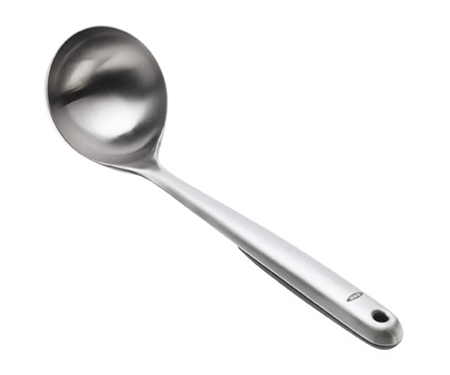
A ladle is has a long handle and a huge, deep bowl. The handle as attached at a steep angle so you can dip down into a pot of soup or gruel and get enough in one scoop to almost fill a bowl when serving.
Mote Spoon
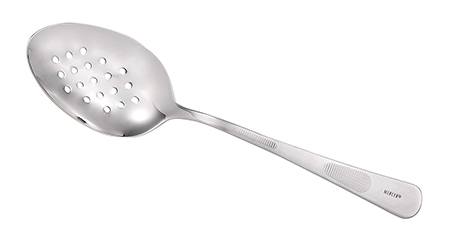
These feature a perforated bowl to help you scoop out and sieve loose tea from a cup of tea. The handle ends in a sharp spike so you can shove it into a teapot spout to unclog it from other loose tea.
Mustard Spoon

These are specifically for serving various types of mustard. They are small and have an elongated, deep bowl situated in parallel with the straight, long handle. This lets you dip straight into a mustard jar and pull right back out.
Olive Spoon
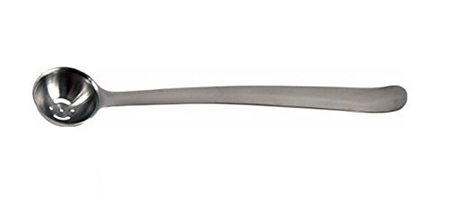
These are made from stainless steel with slots or a hole in the bottom of the bowl. This allows you to scoop olives out from their liquid while draining the liquid before placing them in a bowl or on a plate.
They're also used for cherries, garlic, cocktail onions, and other condiments suspended in liquid.
Panja
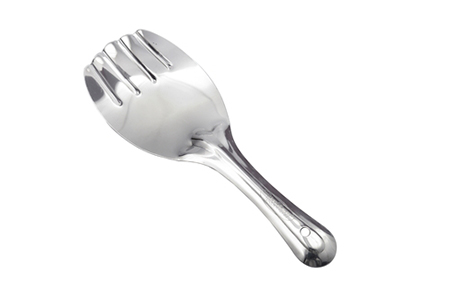
A panja is a rice spoon found in India. It features a flat surface and four finger-shaped indentations, found to make it easier to scoop and serve rice. The end of the handle often has a loop to tie off a string for easy storage.
Rice Spoon
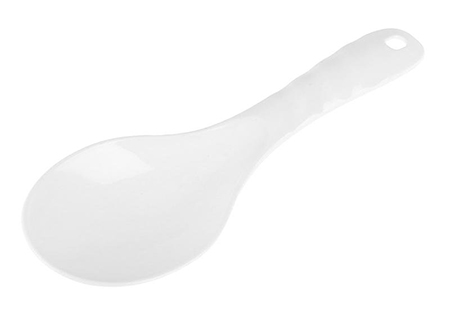
You'd think this is like a panja but it's not. People call them rice paddles, too. They're all based on shamoji, the Japanese rice spoon. It's a large and nearly flat paddle, shaped perfectly stirring vinegar into rice for sushi and serving rice in general.
Some have plastic non-stick surfaces, but most are made from bamboo or other types of wood and sealed with lacquer.
Risotto Spoon
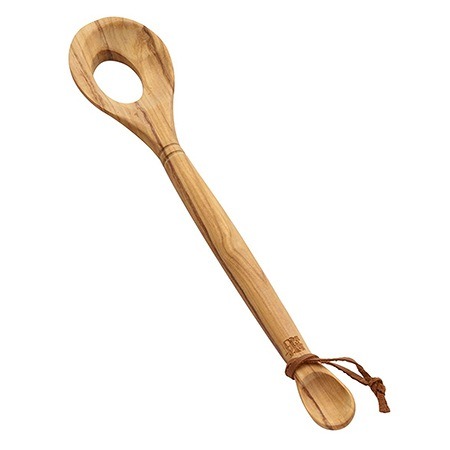
Risotto is type of rice, but this is a third type of unique rice spoon. These are made of wood and feature a typical bowl where usually (but not always) one corner of it comes to a right angle.
The bowl has a hole in the middle so when you stir the risotto it can flow through to reduce the amount of grains you're breaking.
Serving Spoon

These are bigger than a tablespoon but the bowl is rounder than oval shaped in order to pick up more food per scoop. It has a long handle to accommodate serving various types of food, including vegetables and cut up fruit, and to portion out salads.
Slotted Spoon
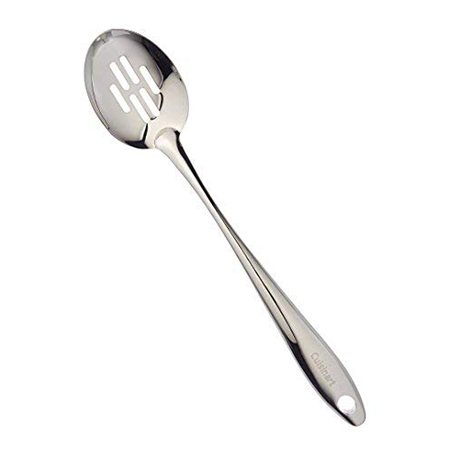
This is more a category of spoon types, since many feature slots. The slots or holes are designed to allow liquids to drip through while keeping the wet solids on top. Think about serving green beans or cabbage and you've got it.
Spaghetti Spoon
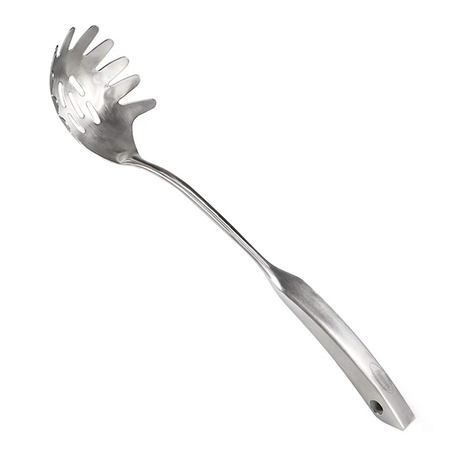
Imagine a ladle that has big tines around the edge of the bowl and you have a spaghetti spoon that aids in picking up soft, cooked spaghetti noodles. In the United Kingdom, they sometimes call it a Yurkle.
These often will have a hole in the middle of the bowl to let you measure out servings of dry, straight noodles.
Stirrer

This is another general category for spoons with very long stems and small bowls, aiding in stirring liquid in any sized tumbler.
Sugar Spoon
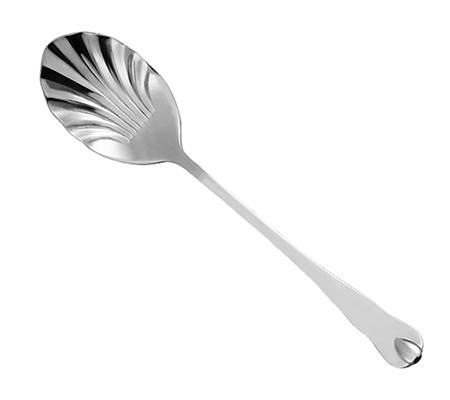
Sometimes called a sugar shell, for some reason this type of cutlery ultimately ended up having a bowl in the shape of a sea shell. They're about the volume of a teaspoon but with a deeper bowl, meant for serving granulated sugar.
They're typically sterling silver and come with formal tea and coffee sets. There are some with flat bowls called sugar shovels, as well.
Tablespoon

Though these are most commonly used when eating, they serve a purpose for serving and food preparation. Their volume is three times that of a teaspoon. It's used as a unit of volume, but it's also the most commonly used spoon in general.
Teaspoon
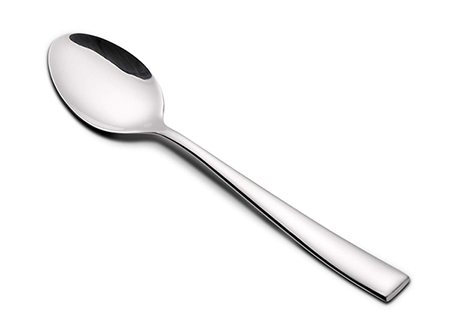
These are smaller than tablespoons by a factor of three. A teaspoon is now a unit of volume. They're most commonly used as stirring spoons now and sometimes to sip hot coffee or hot cocoa.
Wooden Spoon
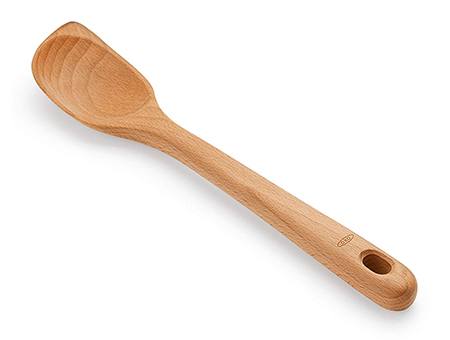
These are generally larger, with bigger but shallow bowls and long stems. They're coated in lacquer but over time will lose their coating and begin becoming soft and even splintering.
You should toss them out at that point. They are very common in food preparation due to their inexpensive cost but equally good performance.
Special Use Spoons
Not all spoons are used in food preparation, cooking, serving, and eating. There are some used in rituals and special events. I did include a couple food related ones here as well based on their special features.
Anointing Spoon
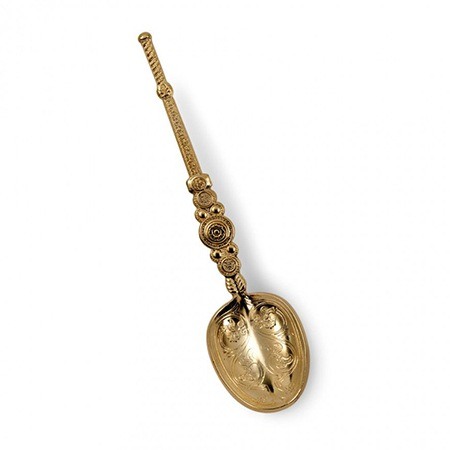
Also called a coronation spoon, these are silver and are used as part of the Crown Jewels of the United Kingdom, which is the regalia first implemented in the 12th century during the coronation of monarchs.
Apostle Spoon
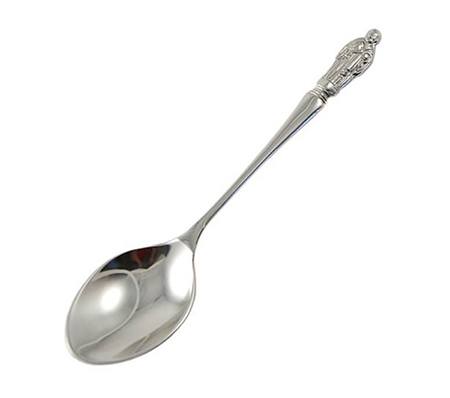
These are gifts given during the christening, when a baby is given a Christian name and is baptized. They are spoons that feature a bust of an apostle at the end of the finial (handle).
Baby Spoon
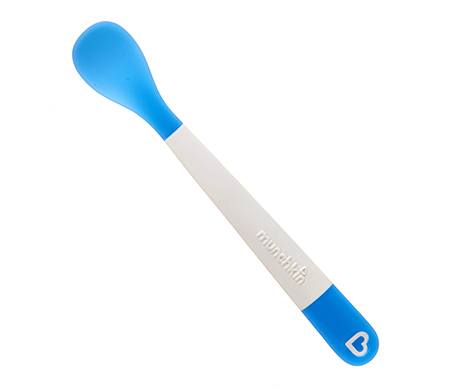
These are typical spoons, just down-scaled to be the proper size for a baby to eat from. In the present they're often coated in soft plastics and made to be colorful. You'll see them featuring animal heads on the handle or covered in designs from cartoons.
Cochlear Spoon
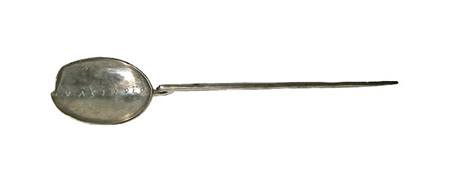
This is another religious spoon used by the Eastern Orthodox Church. It's used when serving consecrated wine, often with a piece of the sacramental bread within it.
Ear Spoon
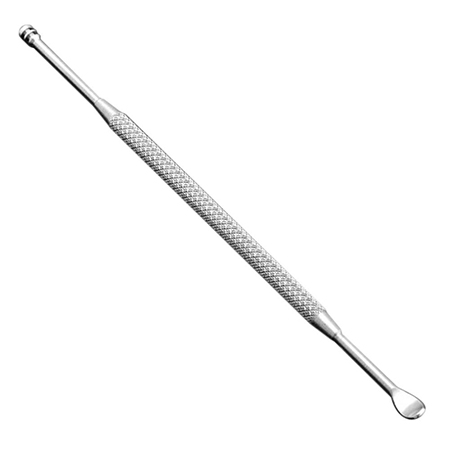
This is a gross instrument used to scoop out earwax from the ear canal. They aren't used often any more now that cotton swabs are invented and heavily marketed.
Bad Stuff Spoon
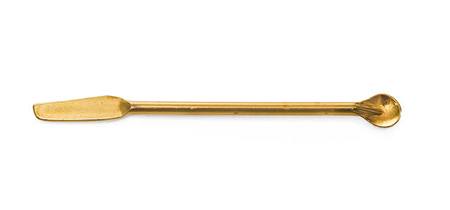
I hesitate to mention these but for the sake of completion, I will. These are tiny, meant to aid the insufflation of bad stuff. I'm sure you get it. I'd rather not describe it further.
Lovespoon
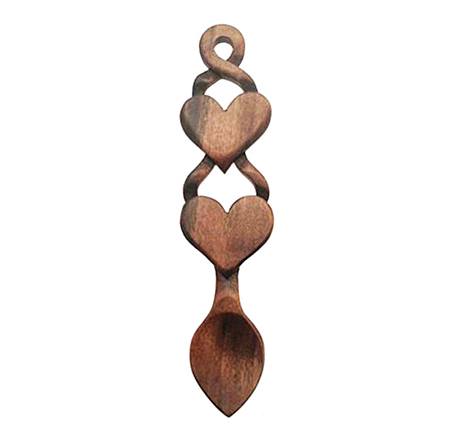
These are a traditional Welsh gift given from a suitor to his promised bride. They're made from wood, carved to be very decorative. They usually will have two bowls within them, one halfway up the handle.
In the carving are symbols for luck, faith, commitment, security, and other positive meanings for a successful marriage.
Maidenhead Spoon
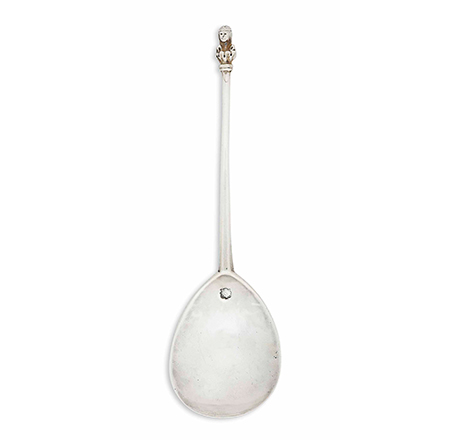
These are another type of religious spoon given as a gift. Popular in the 16th century, they are made from silver and terminate on the handle side with a bust of the Virgin Mary.
Side Notch Spoon
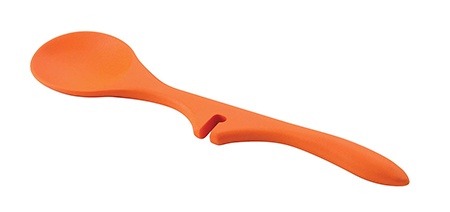
You may laugh that I included this here but I want people to know they exist. There's nothing worse that spilling liquid or sauces everywhere and dirtying up a spoon tray, when you can just clip it to the side of the cooking pot instead between stirring.
Silver Spoon
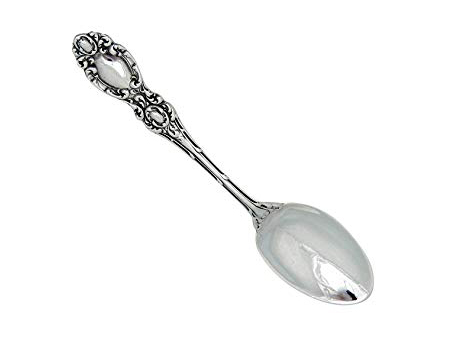
You've heard about not being "born with a silver spoon in my mouth." These are small spoons that are supposed to provide good fortune, given to a newborn child. These days they act as a metaphor, meaning you came from a wealthy family.
Souvenir Spoon
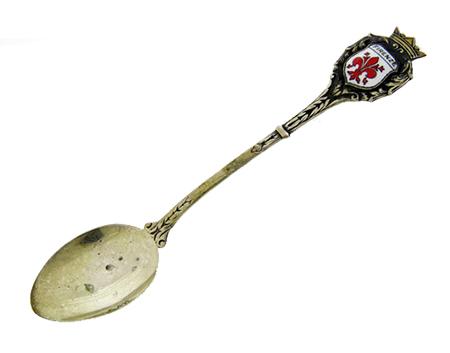
Who doesn't love these? My mom does and I've spent a fortune on them. These are small spoons that are decorated with locations, words, or symbols from a specific place or event, collected as you travel around the world and displayed in a spoon cabinet.
Uddharani
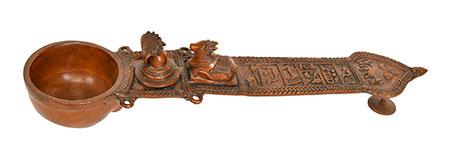
An uddharani is a smaller spoon usually made from brass, silver, copper, or gold. It's used during puja and achamana to offer water during the purification ritual.
Wooden Spoon
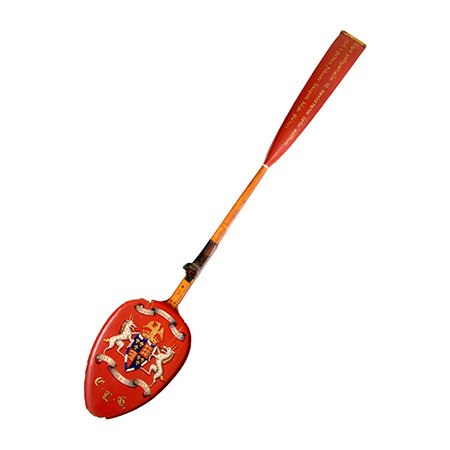
These are presented at Cambridge University as a consolation prize and joke to the person who ranks the lowest among those earning honors in the mathematical tripos course. Other universities have picked up the tradition and use it at various times.
Are There More Types of Spoons?
One could argue that there are more spoon types out there, or that you could even condense this current list down. I agree, and I also agree that this is currently the most comprehensive list available.
If there's more out there, I don't even want to know about it at this point! I hope you enjoyed learning about it as much as I did, like I did with the different types of drinking glasses.



